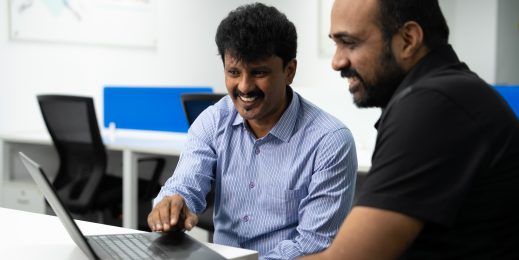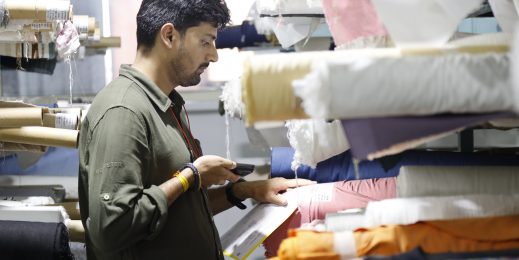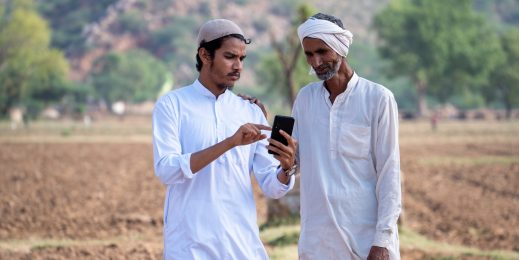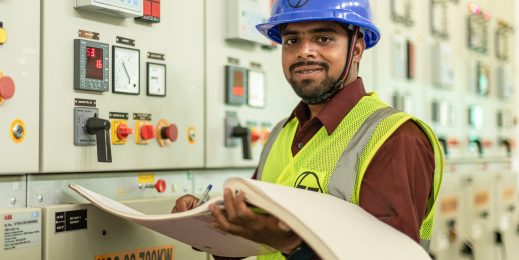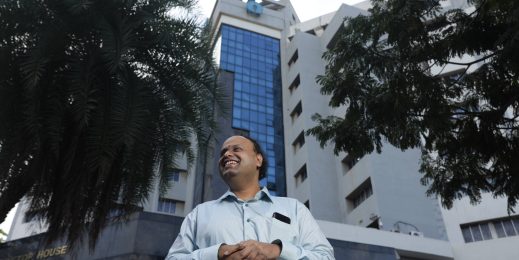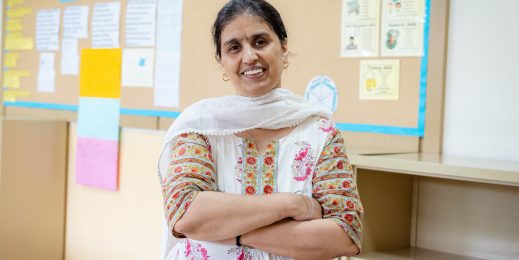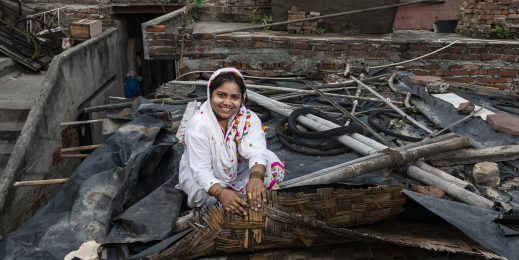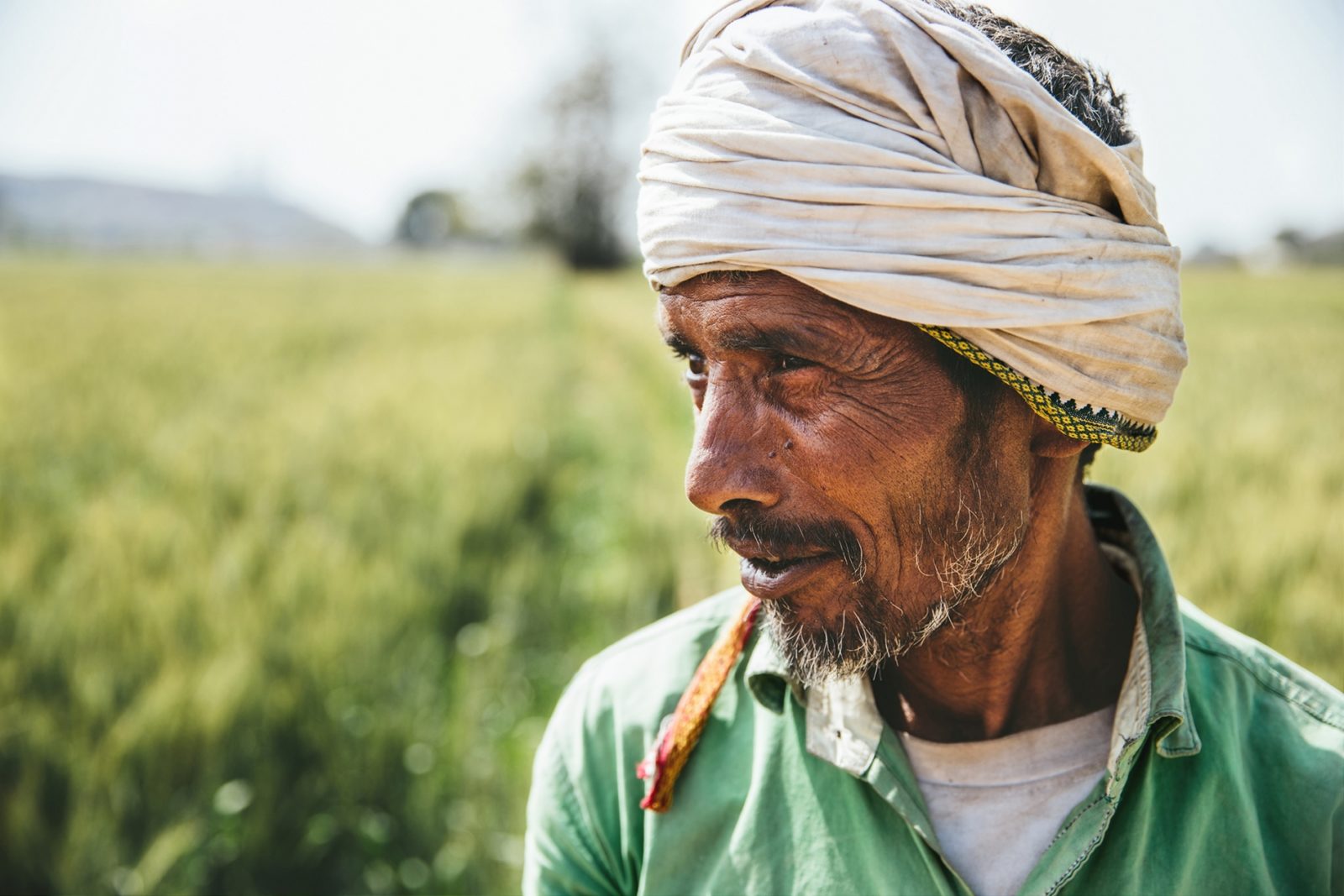
How CropData is enabling small farmers in India dream big
Using AI, Blockchain, and Cloud, CropData is helping small farmers in India improve their yields and sell directly to buyers
As we connect over a Teams video call on a rainy Bangalore afternoon, and scan each other’s backgrounds for bookshelves, something else catches my attention. Behind Sachin Suri, the managing director of CropData, is an abstract painting that seems to have a collage of tiny, colorful rectangular pixels. So instead of diving into the challenges of farmers in India, I start my conversation with Suri by asking him about the painting. Who knew it’d be the perfect context-setter for this interview.
“It’s not a painting,” he clarifies. “This is actually a spectral analysis satellite image of farms. Each tiny spot, or a geo-spatial tile, is an actual field in Punjab and the different colors denote the stress levels in individual farms.” This ‘painting’, that we now know not to be a painting, has a direct correlation with CropData’s vision and mission.
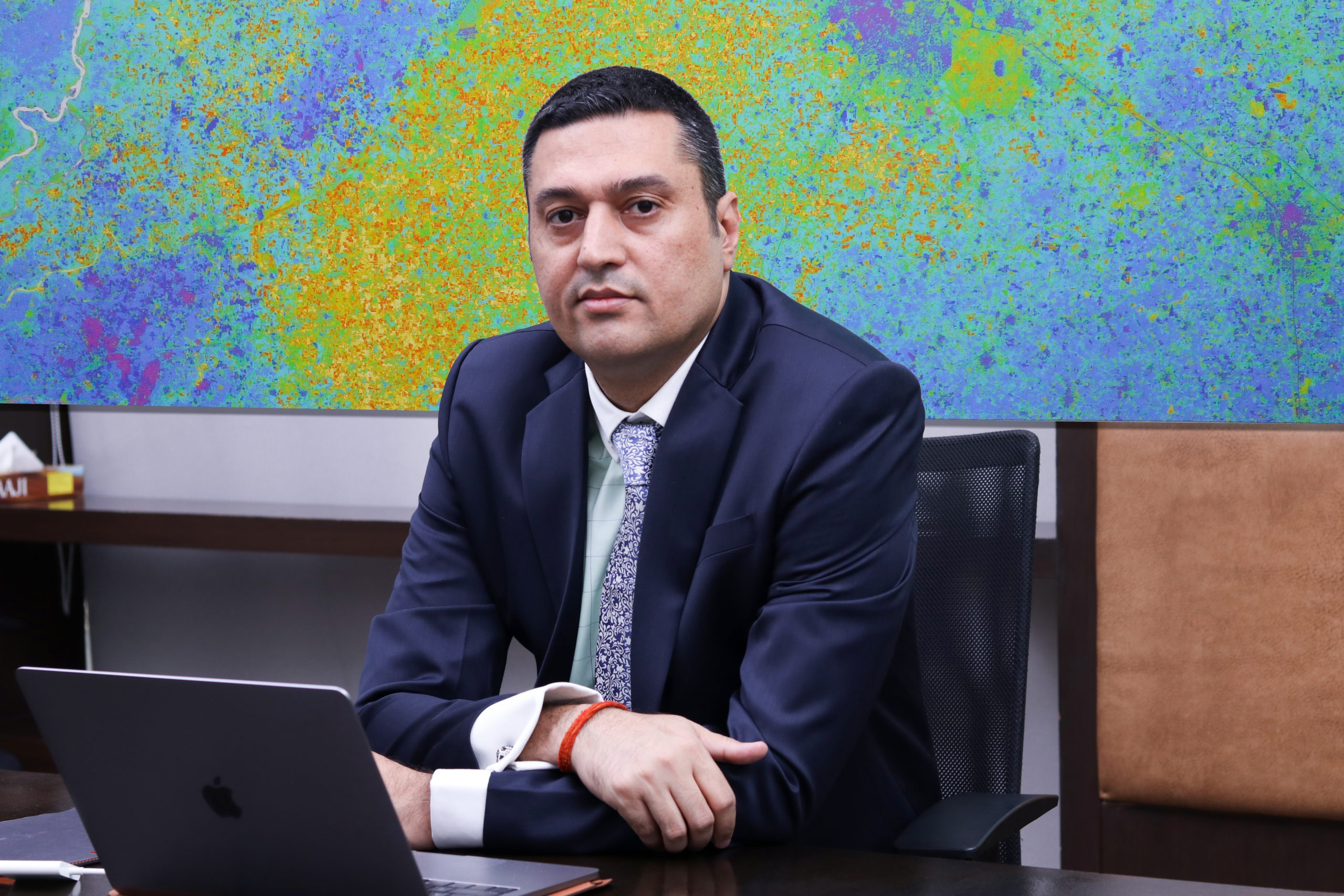
“These images underline the fact that every farm is different. Forget at a state or district level, our data shows that even adjoining farms can have significant variation in farm health parameters. Painting them all with the same brush for government schemes like insurance, subsidies, and even minimum support prices is a gross injustice to farmers,” Suri says.
Similar frames like the one behind his desk adorn the walls of CropData’s office in Nagpur, Maharashtra–a state that has witnessed long spells of droughts and farmer suicides. The images don’t just look captivating but also send a message.
“Our purpose is to help the smallest farmer in the remotest part of India make a viable living,” he says.
Our purpose is to help the smallest farmer in the remotest part of India make a viable living.
CropData is attempting to solve some of these challenges with the help of Cloud, AI and machine learning algorithms, and blockchain technologies. The company has just launched a blockchain-enabled e-marketplace for Indian farmers to sell their produce directly to end buyers in open auctions, in partnership with UAE’s Dubai Multi Commodities Centre (DMCC).
What follows are some edited excerpts from our conversation where Suri talks about how CropData is building this platform using the capabilities of Microsoft Azure to empower India’s farmers.
Why did you start CropData?
We initially started CropData as a risk management and advisory service that we’d provide to farmers and governments. We studied the entire value chain right from the time a farmer decides to grow a particular crop, buy the seeds, all the way to harvesting to reaching the end buyer. We mapped government policies to see where the gaps lay.
But when we met farmers, they didn’t want our advice—they have been farming for generations, after all. The only thing they were interested in was whether we could help them increase their income. So we ended up building a trusted platform where we connect farmers to bulk buyers and sell their produce.
Interesting. It seems like farmers were facing challenges selling their produce more than anything else?
The entire agriculture industry, in a way, is skewed towards promoting inefficiencies.
Unlike farmers in developed countries who have large farms, Indian farmers have very small land holdings. In the absence of farm-level granular data you can’t provide the right advisories to farmers that will work in their fields or help them stabilize their production.
As a result, the government advisories are generated at a district level. Even farm subsidies and insurance products are customized at a state level. Since there are no scientific means to predict the yield and hence income at the time of harvest, farmers have a difficult time securing credit from financial institutions for input costs. They rely on informal money lenders with unfavorable terms.
It gets worse when it comes to selling their produce. There’s no transparency on the price a farmer sells in the market and the price at which it is sold to the end buyer. The current system does not reward farmers that have a higher quality product because there’s a fixed minimum support price for one crop irrespective of the quality of produce.
At the end of the day, a farmer does not have any incentive to put in the extra effort to improve the quality of their output. It is not uncommon to see farmers adding water and dirt to increase the weight of their produce to make more money.
That sounds ominous. So how does CropData help these farmers?
Till now, farmers in India had to wait till their crops were harvested to get a sense of the income they’d make or they could go for advanced trading on an individual basis that relies mostly on guesswork. We have converted that into a scientific trade to help farmers get better price on advance trading.
With our technology, we connect farmers to bulk buyers on our e-marketplace, where their harvest is hedged very early in the crop cycle according to the predicted quality and yield from their farm. This gives farmers an early visibility into their income and ensures that they have the incentive to put in all the effort that goes into a crop cycle.
To do that, we’ve created an e-marketplace on Microsoft Azure called Agriota that connects all stakeholders with a focus on providing utmost transparency with the use of blockchain. We have partnered with DMCC for the platform. It’s an open auction process where we represent the farmers and all that farmer has to do is work on this field diligently to get the best possible yield and quality.
With our technology, we connect farmers to bulk buyers on our e-marketplace, where their harvest is hedged very early in the crop cycle according to the predicted quality and yield from their farm. This gives farmers an early visibility into their income and ensures that they have the incentive to put in all the effort that goes into a crop cycle.
Selling the crops months away from harvesting sounds interesting. But how does it work?
Once we onboard a farmer, we perform diagnostics on the farm. This includes crop health assessment with weather correlations, aerial imagery, the kind of seeds that are planted, how they are planted, the stress levels, and much more. We call it Dr Krishi module (krishi means agriculture in Hindi).
Once we’ve done on-ground diagnostics, our machine learning algorithms take over, which help us understand the health of the farm and the expected yield and quality. It also helps us club together farms that are similar in terms of their risks, crops, quality, and other health parameters.
This is one of our biggest inventions–the farms are not adjacent to each other, but they demonstrate the same parameters. By clubbing small farmers with larger farmers, we provide these smaller farmers the economies of scale and fair price that a large farmer would get. This clubbing also helps us to provide farmers access to institutional credit at favorable rates.
We bundle farms by their risk profile and assign them a credit rating, just like you have housing loans in the west, which helps financial institutions assign loans with confidence.

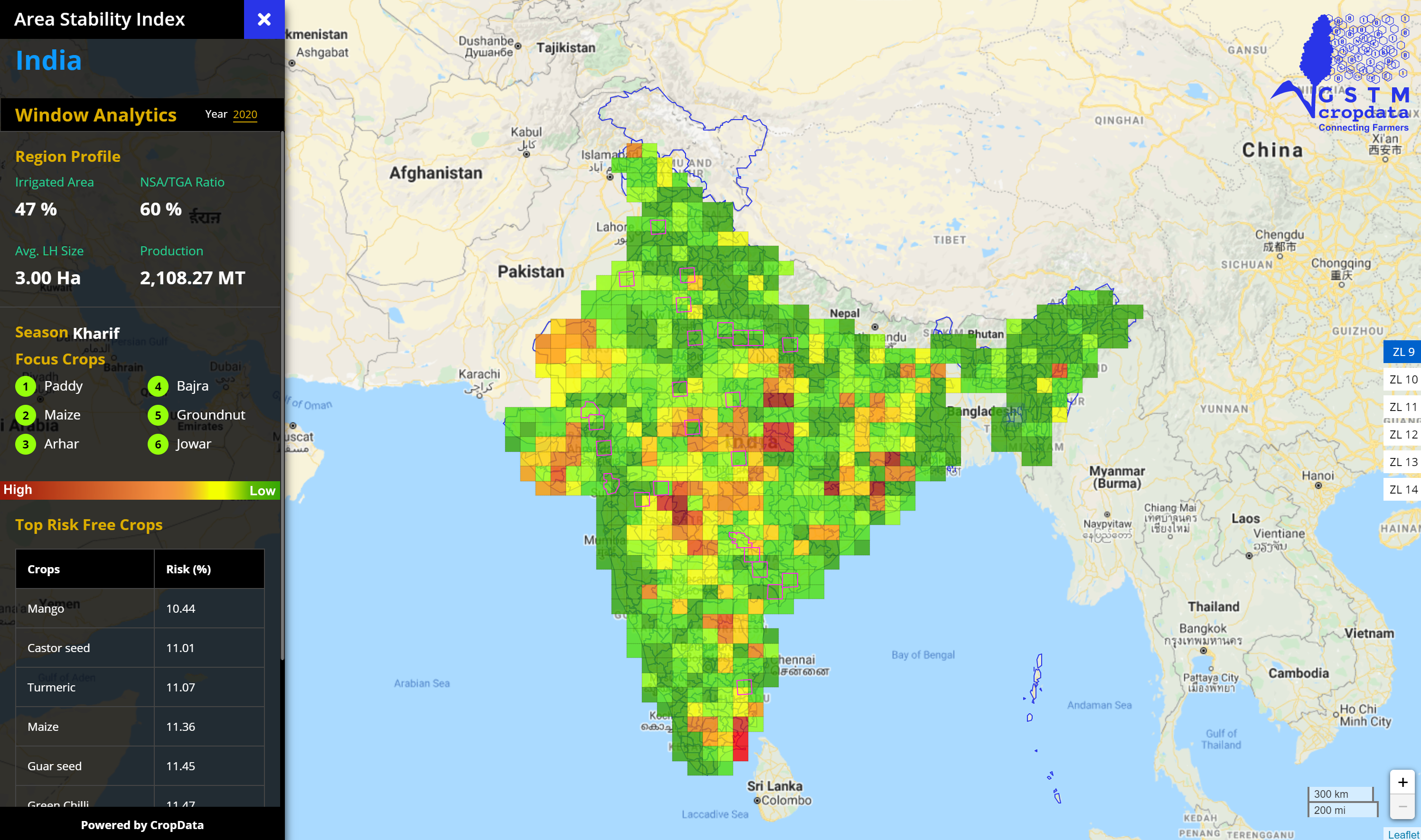
That explains the benefits for the farmers. But what’s in it for buyers?
Like I mentioned earlier, there’s a lot of mistrust between the farmer and traditional buyers. We remove that by providing a neutral, unbiased system for everyone involved by being transparent about price discovery and unforeseen risks. The e-marketplace trades smart contracts using blockchain and we provide escrow banking services in partnership with one of the biggest banks in India to prevent any mismanagement of funds.
The end buyers also get visibility with regular updates right up to the time they receive the product. We augment that with deep trade analytics like price analysis, reports, and geospatial data. We also provide them with a secondary market option, where they can re-trade and even liquidate their existing positions.
How did CropData start its association with Microsoft and what has the experience been?
Initially we started off with only our marketing platform on Azure. But the kind of support and hand-holding we received from Microsoft, be it industry connects or programs like Microsoft for Agritech Startups at the beginning of our engagement was so impressive that we moved all our platforms and services to Azure. We are also working closely with Microsoft’s engineering teams to build our products and incorporate some of the AI work that has been done on FarmBeats into our workflows during the diagnostics process.
Considering the current COVID-19 situation, we had to rethink about training people on the ground and Microsoft Community Training (MCT, erstwhile Project Sangam) came as a godsend. All our training for employees, right from the basics to going deep, is now happening online via MCT. One benefit is that they can go through the training videos on their own, when they want to, and have the option to revisit any video. We release our videos on the platform and unlike sharing it over messaging apps or email, we know they are secure, and they can’t be misused. The other advantage is we are able to roll out videos to employees based on their position and role in the company, so the learning module is customized for them.
Working with Microsoft has felt like working with a partner and it has been an incredible journey.
Now that the e-marketplace is live, tell us about what’s happening now and what comes next?
We have a footprint now in 30 districts across eight states and we are ramping up our presence as we talk despite the current restrictions due to COVID-19 using a prioritization algorithm we’ve created. We have launched Agriota with 18 commodities and each commodity can have anywhere between five to ten varieties. We now have over 50,000 farmers already on the marketplace.
Our data platform called Geospatial Tile Management will continue to aggregate more data to provide insights at even more granular level. Currently, we provide analytics up to village level and soon our buyers will be able to zoom all the way up to farm level data.
In our first year, our aim is to have 150,000 farmers on the marketplace in the first first year and touch over five million farmers in five years. This, we estimate, will translate into a gross merchandise value of transactions of USD 250 million in the first year and USD 8.5 billion in five years.






